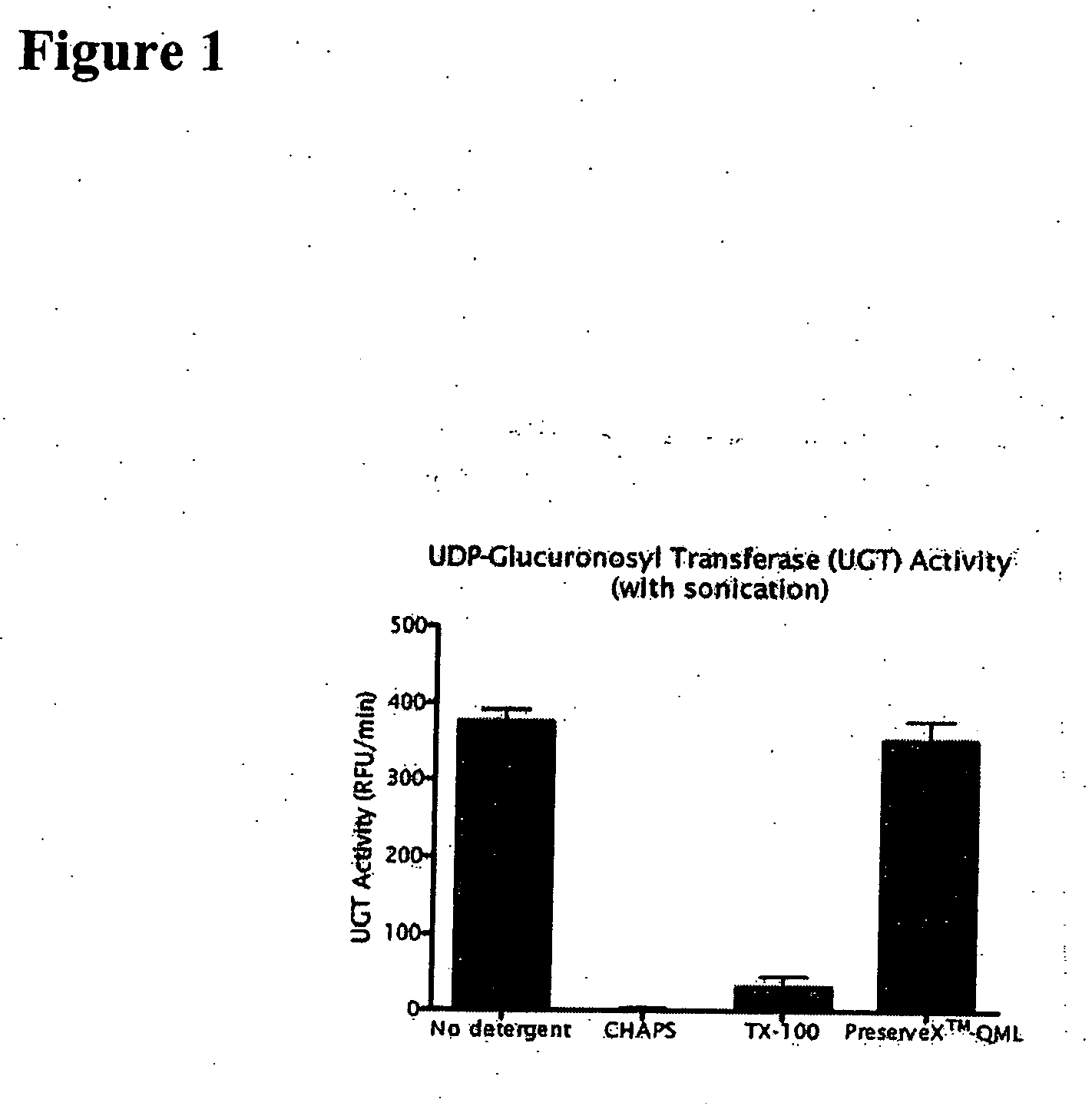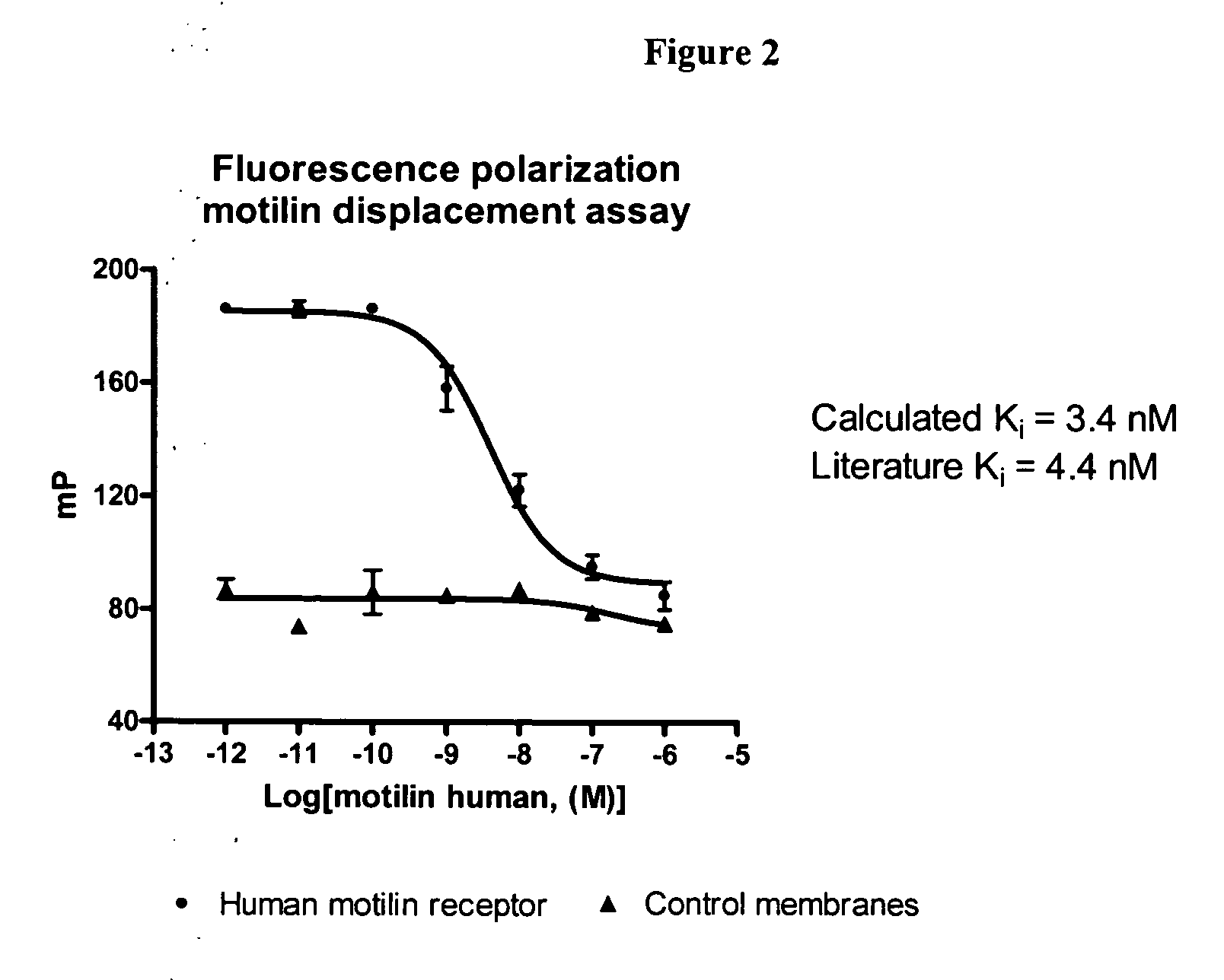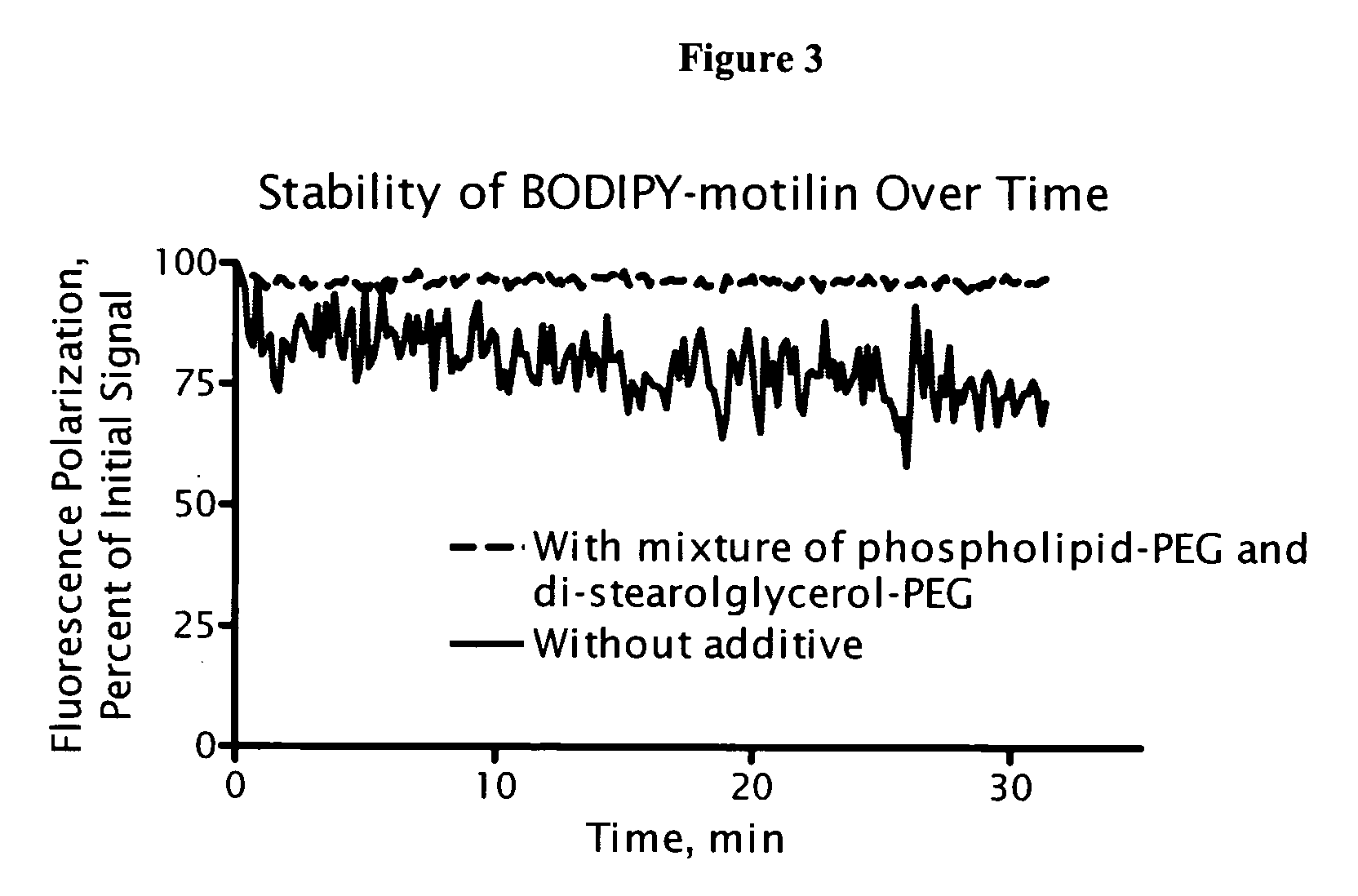Methods and compositions for extracting membrane proteins
a membrane protein and composition technology, applied in the field of methods and compositions for extracting membrane proteins, can solve the problems of substantial reduction or elimination of protein function and/or activity, serious obstacles in research involving membrane proteins, and alteration of protein structur
- Summary
- Abstract
- Description
- Claims
- Application Information
AI Technical Summary
Benefits of technology
Problems solved by technology
Method used
Image
Examples
example 1
Solubilization of UGT1A1 Membranes
A. Methods
[0119] UGT1A1 was isolated from Baculovirus-infected sf-9 cells expressing human UGT1A1. Cell membrane fractions were isolated using a standard protocol (McNamee et al., Biotechniques 7:465 [1989]). Membrane pellets were washed with HEPES buffered saline and microfuged. Protein concentration was measured using a BCA assay (Pierce Biotechnology, Rockford, Ill.). Washed membranes were resuspended in HEPES buffered saline at 0.5-4 mg / ml protein at 4° C. An amphiphilic polymer-based solubilization medium consisting of phospholipid-PEG conjugate and a di-stearolglycerol-PEG conjugate at a 1:20 protein:reagent (w / w) ratio was added and the solution was vortexed. The mixture was sonicated using a VWR Model 75D bath-type sonicator at maximum power for 30 seconds. The unsolubilized membrane proteins were precipitated in a centrifuge at 16000×g for 10 min at 4° C.
[0120] The supernatant was removed and analyzed for UGT1A1 activity. Over 95% of th...
example 2
Solubilization of Human Motilin Receptor
[0121] This example demonstrates that human motilin receptor, one of the G-protein-coupled receptors, can be incorporated into PreserveX polymeric micelles. Human motilin receptor membrane preparation (commercially available form PrerkinElmer Life and Analytical Sciences, Boston, Mass.) were mixed with phospholipid-PEG conjugate and a di-stearolglycerol-PEG conjugate (90 / 10 mixture) and were sonicated in 1:5 total protein to total polymer (w / w) ratio for 30 sec. Sonication conditions were identical to the above example. Fluorescence polarization displacement assay was performed with polymeric micelle-incorporated receptor with 6×10−10 M of BODIPY-TMR motilin as a tracer. The unlabeled motilin (Phoenix Pharmaceuticals, Belmont, Calif.) was used as a displacer in a range of concentrations (FIG. 2). FIG. 2 demonstrates that upon incorporation into the polymeric micelles the motilin receptor preserves full biological activity and demonstrates exc...
example 3
Stability of Fluorescent Ligand
[0122] A mixture of phospholipid-PEG and di-stearolglycerol-PEG was mixed with BODIPY-motilin (a fluorescently-labeled 22 residue peptide; Perkin Elmer, Wellesely, Mass.), and fluorescence polarization was monitored continuously for 30 minutes. The use of a mixture of phospholipid-PEG and di-stearolglycerol-PEG resulted in a more stable signal (FIG. 3), which finds use in screening applications.
PUM
| Property | Measurement | Unit |
|---|---|---|
| pH | aaaaa | aaaaa |
| volume | aaaaa | aaaaa |
| concentrations | aaaaa | aaaaa |
Abstract
Description
Claims
Application Information
 Login to View More
Login to View More - R&D
- Intellectual Property
- Life Sciences
- Materials
- Tech Scout
- Unparalleled Data Quality
- Higher Quality Content
- 60% Fewer Hallucinations
Browse by: Latest US Patents, China's latest patents, Technical Efficacy Thesaurus, Application Domain, Technology Topic, Popular Technical Reports.
© 2025 PatSnap. All rights reserved.Legal|Privacy policy|Modern Slavery Act Transparency Statement|Sitemap|About US| Contact US: help@patsnap.com



